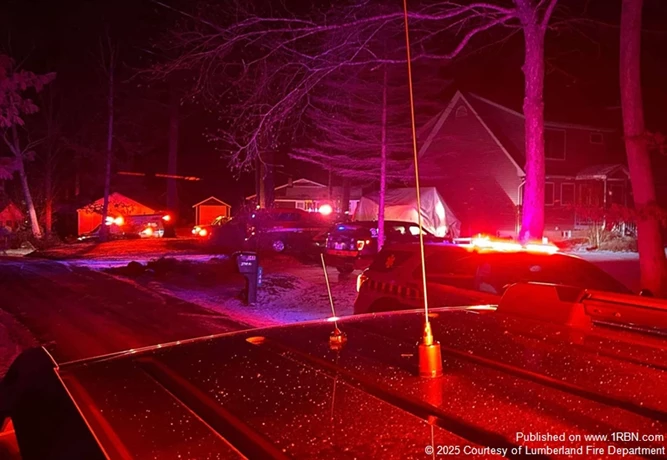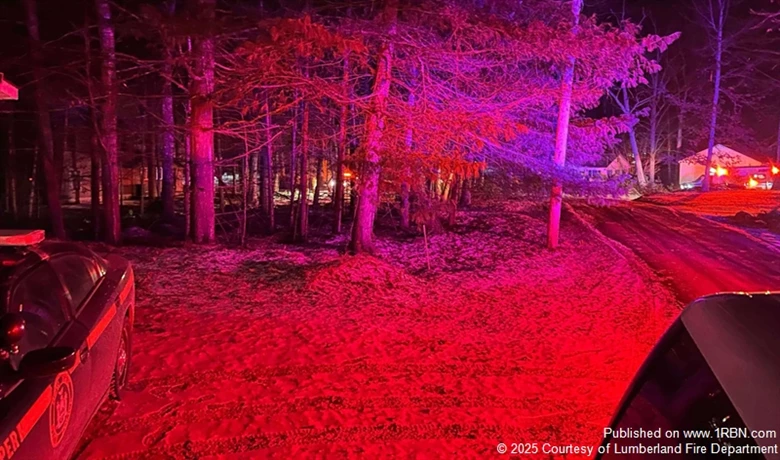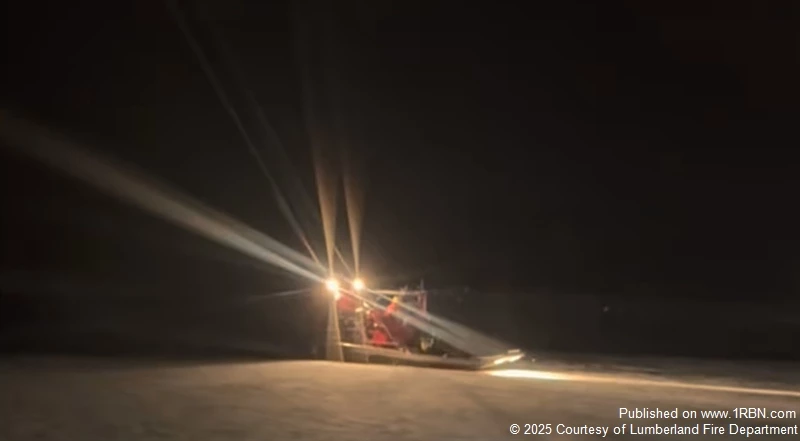Lumberland Fire Department and mutual aid responders rescue skater from lake


Photo by Courtesy of Lumberland Fire DepartmentMohican Lake Ice Skater rescued

Photo by Courtesy of Lumberland Fire DepartmentMohican Lake Ice Skater rescued

Photo by Courtesy of Lumberland Fire DepartmentMohican Lake Ice Skater rescued

Photo by Courtesy of Lumberland Fire DepartmentMohican Lake Ice Skater rescued -- Lumberland Fire Department airboat
LUMBERLAND, NY – Lumberland Fire Department responders, with assistance from multiple mutual aid departments, rescued a 69-year-old ice skater who had been out for a night skate on the evening of Tuesday, January 7.
The rescued individual skated across the ice, to approximately 150-160 feet from shore, when he encountered an unfrozen section and found himself in the water at about 9 p.m.
LFD Chief Eric Robles, who piloted the airboat for this rescue, said a woman attempted to help the man but due to the structure of the ice around them would never have been able to get him out. Robles noted that the ice has not been of minimum even thickness across the lake, and as such has been unsafe for skating or other recreational use.
“The victim had been in the water for about 20 minutes and was hanging onto the ice when we reached him with our airboat. A woman was on the ice near him, but he was holding on by himself. She would not have been able to pull him out without breaking through and falling in herself,” Robles said.
Both were rescued by airboat and returned to EMS help on shore and transport to Garnet Medical Center. The skater, having been submerged to chest level, was in the water for an extended period of time. Had it been much longer, responders say the result may have been much more tragic.
Local water temperatures have been ranging at approximately 30-35 degrees in recent weeks. According to weather.gov’s website and others, submerging in cold water can be deadly in a short period of time.
Warnings on weather.gov's site read – in part: “Plunging into cold water of any temperature becomes dangerous if you aren’t prepared for what the sudden exposure can do to your body and brain. Cold water quickly removes heat from the body which could lead to cold water shock within the first minute, loss of muscle control within 10 minutes or hypothermia within 20 to 30 minutes. When your body hits cold water, “cold shock” can cause dramatic changes in breathing, heart rate and blood pressure. The sudden gasp and rapid breathing alone create a greater risk of drowning, even for confident swimmers in calm waters. Unplanned immersion in cold water can be life-threatening for anyone without protection from the temperatures or a lifejacket to help you stay afloat. When Cold Shock and Hypothermia begin to impact your ability to think and act, lifejackets and floatation can create extra time for help to arrive or for you to get out of danger.”
In this case, the woman was not able to extract this victim from the water, but her screams were heard by others who summoned help. This call for help, along with a very swift response by rescuers, was vital to saving the victim.
Chief Robles, along with others rescuers, including Port Jervis Fire Department firefighter and Ice Rescue Instructor Tim Simmons, warned of diverse ice situations and conditions. Simmons noted that there are all types of ice and factors that impact how solid or safe a section of ice may be.
Simmons warned that ice does not freeze evenly or consistently and can be affected by many dynamics across any body of water. This could include areas with more rays of sun hitting it, varying depths, or wind and streams keeping sections of water moving rather than freezing solidly.
While one may be able to move across a section of ice without it cracking, Simmons noted, if the person stands still the ice may bend and break, or thinner areas may be encountered nearby.
Before taking to the ice, responders advise to check with officials in an area for updates on the status of waterways and overall ice safety.








